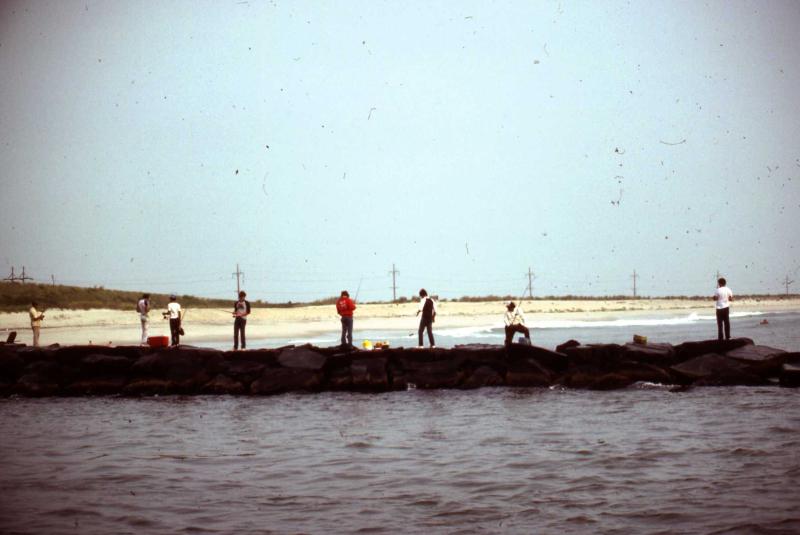Federal funds approved for IR inlet southside repairs
It appears that the southside of Indian River Inlet is going to get some much-needed attention. A news release from the Army Corps of Engineers reports that a $5.3 million contract has been awarded to Agate Construction of Egg Harbour Township, New Jersey to repair a portion of the bulkhead and sand tighten a portion of the south jetty at Indian River Inlet in Sussex County. The work is anticipated to begin in spring 2024.
The contract calls for the repair of a failed section of bulkhead/revetment along the interior shoreline of the Indian River Inlet. A deep scour hole caused by swift tidal currents within the inlet has undermined the slope of the stabilized shoreline and landward infrastructure. Also, the contract calls for sand tightening a 215-foot section of the south jetty. This work will involve installing steel sheet pilling to reduce the amount of sand migrating into the inlet. Agate Construction anticipates mobilizing equipment to the site in April.
As I am sure you have already figured out, access to the construction area will be restricted during the duration of the work.
If you tried to fish the inlet or even access the beach on the southside last fall, I am sure you saw the big holes left by one of our storms. This work is an attempt to fix this problem and try to prevent a reoccurrence.
Regarding the northside area under the inlet bridge, I have no further information on when that project will begin. As I have written before, there is $43 million waiting to be spent on that project.
There will be a virtual public meeting at 11 a.m., Thursday, Feb. 15, to give more details on this subject. I will share more information as it becomes available.
Winter reading
I have been reading a couple of books over the winter that I think you might enjoy.
The first is “The Lord’s Oysters,” by Gilbert Byron, written in 1957 and now available from Amazon. It is the story of a young boy growing up on the Eastern Shore of Maryland in a family of watermen. His father and grandfather both made their living on the water harvesting fish and shellfish. The title comes from what many watermen believe, that the fish and shellfish in the rivers and bays were put there by the Lord, and no man has the right to tell another man how many he can take or when.
When I lived in Virginia and attended the monthly meetings of the Virginia Marine Resources Commission, it was not uncommon for some of the watermen to use that defense when they were brought up on charges. Unfortunately for them, it never worked.
The book tells the story of this boy and his adventures along the river in the early 1900s. I found it very interesting, because it is the same time frame as my grandfather, who grew up in Laurel. Pop’s first car was a horse. His first job was in a livery stable that his uncle owned.
The boy in the book helped his father on the boat, and did a lot of fishing and crabbing on his own. It was just the way everybody lived back then that made the book so interesting to me. No radio, no TV, no cellphones, yet they managed to live their lives and enjoy what they had.
The second book is “Where the Acorn Falls,” by Colin M. “Rip” Cunningham Jr. If that name sounds familiar, the author is the previous owner of Salt Water Sportsman magazine and was my first editor when I wrote for that publication. The book also includes excerpts from “As the Twig is Bent,” by Dr. John H. Cunningham, Rip’s grandfather.
Rip’s portion of the book is the tale of his growing up in the 1950s in Massachusetts. I too grew up in the 1950s and had similar adventures.
While Rip and his buddies were fascinated with gunpowder and explosions, I was more interested in watching the animals in the fields and woods behind my house. Once I was old enough to ride my bike to fishing locations, I branched out, as did Rip.
His grandfather’s entries have nothing to do with the outdoors, but are very interesting to read about the practice of medicine around the late 1800s and early 1900s. Dr. Cunningham writes with a great sense of humor and relates many tales, including treating criminals who show great respect for the medical profession.
Both of these books are a little bit different from the usual hunting and fishing ones I recommend. Not any how to catch the biggest fish or tie the strongest knot, just some entertainment for a cold winter night.






















































